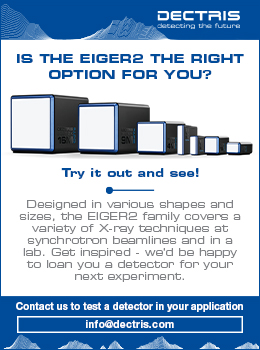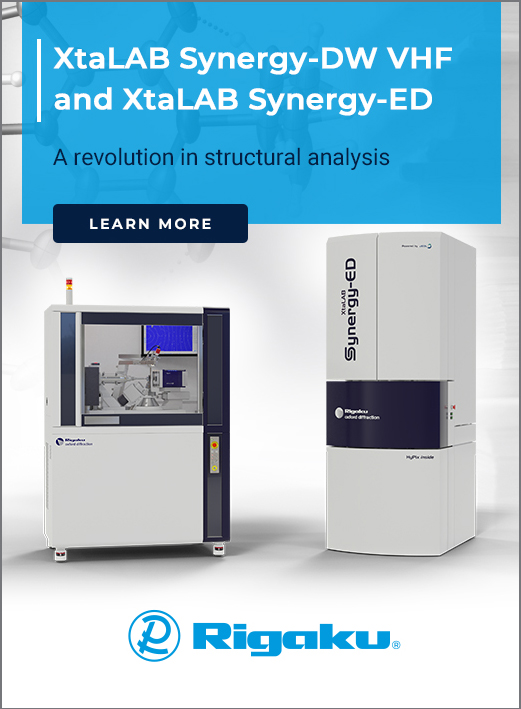


History of crystallography
Celebrating the life and career of Kaarle Kurki-Suonio
![Kaarle Kurki-Suonio and Jim King [Kaarle Kurki-Suonio and Jim King]](https://www.iucr.org/__data/assets/image/0018/153270/kks-jk.png)
Kaarle Kurki-Suonio (left) with the late Jim King (IUCr Executive Secretary 1969–1993) at the "hunting cottage" museum of Marshal Mannerheim, some 100 km north east of Helsinki, Finland, in spring 1986, prior to that summer's Executive Committee meeting in the UK. This and the other photos in this article were contributed to the IUCr gallery by S. E. Barnes.
Merkitykset ovat ensin, professori Kaarle Kurki-Suonio – didaktisen fysiikan maestro (in English, Meanings are first, Professor Kurki-Suonio, the Maestro of Didactical Physics) is the title of a new book that celebrates Professor Kurki-Suonio’s life and achievements. It will be published in January 2022.
In the book, the Professor’s colleagues and students sincerely express their appreciation for the assistance and encouragement they have received from Kurki-Suonio with their studies, research and work. The book also discloses the Professor's inspiring impact by playing classical music together with colleagues and students as well as his enthusiasm for wildflowers and athletics.
A central theme of the book is Professor Kurki-Suonio's unique work as a developer of physics teacher education in Finland. In addition, the book contains articles about his decades-long career, research and achievements in crystallography.
Kurki-Suonio began studying mathematics in 1950 at the University of Helsinki. The actual Eureka moment of learning took place in the first year of his studies at a physics lecture. “I was in my own thoughts, as I often was in lectures. Suddenly, I realized that I could derive formulas by using differential geometry. I understood that the formula follows an understood meaning – and not the other way around,” Kurki-Suonio relates.
This experience initiated the development of the learning philosophy of Kurki-Suonio (Kurki-Suonio, 2011), which still continues. Later, when Kurki-Suonio focused on the development of physics teacher education at the University of Helsinki, the thoughts of that moment condensed into the main motto of physics teaching, “Meanings are first”.
His dissertation on mathematical crystallography was completed in 1959 when Kurki-Suonio was 26 years old. In the 1960s, the physicists Timo Paakkari and Pekka Suortti, from the University of Helsinki, began actively seeking international contacts. Kurki-Suonio says that their work also gave wings to his international career as a crystallographer.
Finnish representation at conferences in the field of crystallography expanded in the 1970s. At the same time, Kurki-Suonio became acquainted with the French academician Erwin Bertaut, who strongly pushed Kurki-Suonio's research forward. In the 1970s and early 1980s, Kurki-Suonio was a member and then Chair of the IUCr Commission on Charge, Spin and Momentum Densities (now Quantum Crystallography), and General Secretary and Treasurer of the IUCr from 1981 to 1987.
![[KKS Perth]](https://www.iucr.org/__data/assets/image/0017/153503/perth.png) "Old and new" members of the IUCr Executive Committee at St George's College, University of Western Australia, at the 14th IUCr Congress in Perth in 1987. From left: V. I. Simonov, Jerry Karle, Theo Hahn, Mario Nardelli, Alajos Kálmán, Kaarle Kurki-Suonio, You-qi Tang, Asbjørn Hordvik and André Authier.
"Old and new" members of the IUCr Executive Committee at St George's College, University of Western Australia, at the 14th IUCr Congress in Perth in 1987. From left: V. I. Simonov, Jerry Karle, Theo Hahn, Mario Nardelli, Alajos Kálmán, Kaarle Kurki-Suonio, You-qi Tang, Asbjørn Hordvik and André Authier.
It is astonishing that while Kurki-Suonio did his research in crystallography and was active in the IUCr, he was able to focus on the development of his teaching philosophy and physics teaching. It is noteworthy that already in 1973, he was nominated as a professor whose duty, among many others, included physics teacher education. Kurki-Suonio took the task seriously and dedicated himself to physics teacher education and research.
Together with his wife, Riitta Kurki-Suonio, and his colleagues, Kurki-Suonio wrote many university physics books, two series of secondary school physics books and a book of his teaching philosophy and didactical physics for teacher education. Between the years 1980 and 2013, 13 didactical physics dissertations, 16 licentiates and 223 master’s theses were completed at the University of Helsinki.
Professor Kurki-Suonio's teaching philosophy aroused interest not only in Finland but also abroad. In Germany, father-and-son researchers Karl Hayo and Hayo Siemsen studied the significance of the philosophy developed by Kurki-Suonio. According to their intensive research, interviews and discussions with many science educators from universities, schools and government bodies, Hayo Siemsen (2010) stated that a main result of the empirical success of Finnish science education was based on Machian ideas implemented in the method of Kurki-Suonio. At that time, about 600 physics teachers, around 20% of Finnish physics teachers, had studied the philosophy and didactical physics of Kurki-Suonio.
Kurki-Suonio “reached the age limit of statutory senility”, as he humorously wrote in his farewell lecture (Kurki-Suonio, 1998), in 1998. In the same year, Kurki-Suonio lost his wife, who had had a profound impact on his life. Nevertheless, he continued his work in the development of didactical physics, e.g. planning seminars, supervising theses and discussing innumerable issues of physics and its teaching that concerned various teachers and students, e.g. in the email discussion group. In 2011, the professor gave six lectures on the empirical basis of modern physics in an in-service course for physics teachers organized by the Department of Physics of the University of Helsinki and the LUMA Center (science education network of Finnish universities).
Today, visitors to Kurki-Suonio may be greeted by beautiful tunes, created when he skillfully dances his fingers over the keys of his grand piano, and become acquainted with the beautiful flowers in his garden. However, in between, there is a great opportunity to discuss, for instance, interaction, which Kurki-Suonio argues/states is a key concept in “almost everything possible” or in how our worldview is constructed.
References
Kurki-Suonio, K. (1998). Products and Processes. https://www.mv.helsinki.fi/home/kurkisuo/6.2.D/98-ProductsAndProcesses.pdf
Kurki-Suonio, K. (2011). Principles supporting the perceptional teaching of physics: A “Practical Teaching Philosophy”. Sci. Educ. 20, 211. doi.org/10.1007/s11191-010-9288-1
Siemsen, H. (2010). Ernst Mach and the epistemological ideas specific for Finnish science education. Sci. Educ. 20, 245. doi:10.1007/s11191-010-9303-6
Pilvi Sihvonen, PhD, is a physics and math teacher at the Heinola upper secondary school, and education researcher at the University of Helsinki, Finland.
Kaarle Kurki-Suonio and the IUCrMalcolm CooperIt is a pleasure to recall the contribution that Kaarle Kurki-Suonio made in two major roles within the IUCr. First and foremost he was General Secretary and Treasurer (GS&T) of the organisation, a very senior role, for the period 1981 to 1987, and secondly he chaired its Commission on Charge, Spin and Momentum Density between 1978 and 1981 and was in fact a member of this commission for six years. The GS&T has responsibility for the finances and general governance of the IUCr, which has an important business arm publishing journals (notably the Acta Crystallographica series) and reference works (specifically International Tables for Crystallography) for the benefit of the crystallographic research community. The IUCr’s support for crystallography worldwide, specifically through financial support for young scientists travelling to international conferences, schools and workshops plus other “good works” depends utterly on the profits from its publishing business. In his time at the helm as GS&T, together with the Executive Secretary and the triennially elected Executive Committee, he oversaw a significant journal publishing operation with an editorial staff complement of just a handful, based in Chester in the UK. When he took over as the GS&T the IUCr had assets of just around one million Swiss francs. He set up a Finance Committee with Bob Diamond as its first Convenor. The Committee’s remit was to advise him and the IUCr Executive Committee on the Union’s finances. I am delighted to say that I have now had the privilege of being Convenor for over two decades, during which time I have come to appreciate well the changes that Kaarle implemented in the Union’s financial strategy in the 1980s. He saw immediately that the journals were significantly under-priced and that the current contract with the publisher, Munksgaard, was very disadvantageous to the Union. He renegotiated the contract and raised the subscription prices significantly, with the result that in three years the IUCr’s assets had doubled. Then they approximately doubled again in the next triennium, all under his stewardship; indeed no further rises in journal subscriptions were needed until 1990, and the IUCr was able to fulfil its remit to liberally support crystallography worldwide. Staff who were employed in the Chester office when Kaarle was GS&T make the point today that he took a real interest in them personally as well as their working roles. He was instrumental in recruiting people who have remained with the IUCr to this day, and who were closely involved in the rapid development of the publishing business as it emerged into the digital era. Perhaps it is not surprising that a portrait of Kaarle, unveiled in 1998, still adorns the walls of the IUCr offices! ![[KKS Vienna]](https://www.iucr.org/__data/assets/image/0018/153504/vienna.jpg) From left: Asbjørn Hordvik, Ted Maslen, Anne Cawley, Kaarle Kurki-Suonio and Mike Dacombe in the Vienna woods in August 1988. From left: Asbjørn Hordvik, Ted Maslen, Anne Cawley, Kaarle Kurki-Suonio and Mike Dacombe in the Vienna woods in August 1988.
The IUCr’s Commission on Charge Spin and Momentum Density was the natural home for Kaarle’s early research interest in the multipole analysis of electron density distribution in solids, a subject for which he had built up an international reputation and developed a research group based in the Helsinki University Physics Department. Within his department he also oversaw the novel development of complementary research work to study the momentum distribution of those electrons through the Compton effect by his colleagues (notably Osmo Inkinen, Timo Paakkari, Seppo Manninen and Pekka Suortti): it was this latter research line, which was also my speciality, that brought me into close contact with his Department at the University of Helsinki, especially with the late Seppo Manninen, and facilitated me meeting Kaarle for research discussions on many occasions in the beautiful city of Helsinki. He joined the IUCr’s Commission on Charge, Spin and momentum Density in 1975 at the time of the IUCr’s Amsterdam Congress. It was largely through his efforts that the Commission’s 1976 triennial conference was held at Kiljava in Finland and attended by leading researchers and young scientists from around the world. This conference was part of a triennial series called the Sagamore conferences after the location of the first two (1964 and 1967) at Sagamore in Upper New York State, USA. They were traditionally in remote countryside locations with formal sessions restricted to mornings and evenings, and afternoons reserved for informal discussions and relaxation in the fresh air, following the pattern also developed by the Gordon conference series. This formula was perfectly adhered to at Kiljava, a lakeside and forest conference venue to the delight of all participants who quickly appreciated the pleasures of the Finnish way of life, including sauna and freshwater swimming. Kaarle’s Sagamore conference stays fresh in the memory of many of those who were there to enjoy it. In conclusion, very many people outside of Finland around the world have reason to be grateful for Kaarle’s scientific and educational work. Not just the scientific work he did himself, which was substantial, but also for the achievements he inspired in others. I am grateful to my colleagues in the IUCr, past and present, for their input into this brief article. Those of us who are involved with the IUCr and especially its finances, have good cause to praise Kaarle Kurki-Suonio and enjoy this opportunity to join in celebrating his life. Malcolm Cooper is Emeritus Professor of Physics at the University of Warwick, Coventry, UK, and Convenor of the IUCr Finance Committee. |
Copyright © - All Rights Reserved - International Union of Crystallography








